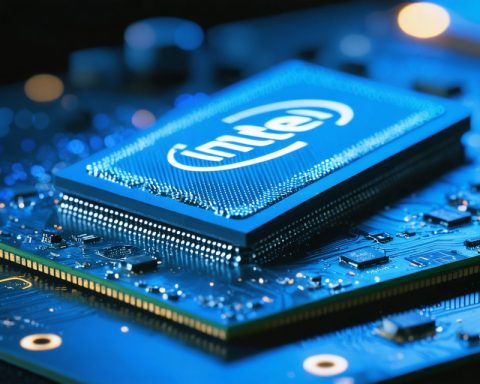- AI technology aims to minimise turbulence, enhancing the comfort of air travel.
- Researchers at the KTH Royal Institute of Technology and Barcelona Supercomputing Centre utilise AI for real-time aerodynamic adaptations.
- AI-powered synthetic jets can reduce airflow disruption by 2.2%.
- LSTM neural networks anticipate potential stalls 10 seconds sooner, improving safety margins.
- AI and IoT collaborate to predict clear-air turbulence (CAT), decreasing aircraft stress and maintenance costs.
- The ongoing integration of AI in aviation promises smoother flights, enhanced pilot tools, improved fuel efficiency, and heightened safety.
- AI innovations are transforming the aviation landscape, offering a more predictable and serene flying experience.
The sky, a theatre of both awe and anxiety for travellers, may soon shed its unpredictability, thanks to groundbreaking advances in artificial intelligence (AI). Turbulence, the bane of countless flights, often turns smooth journeys into episodes of jostling discomfort. Yet, AI is poised to change all that, transforming air travel into a smoother, more serene experience.
Imagine wings that adapt in real time to the unpredictable flow of wind. This isn’t science fiction—it’s the work of researchers from KTH Royal Institute of Technology in Stockholm and the Barcelona Supercomputing Centre. They’re developing AI-driven aerodynamic solutions that target the vexing issue of flow detachment. When air no longer glides smoothly over a plane’s wings, lift vanishes and drag spikes, creating the dreaded roller-coaster effect we all know too well.
Enter AI-powered synthetic jets, which release precise pulses of air from the wing surface, managing airflow with astonishing accuracy. Early tests indicate these clever systems can minimise airflow disruption by an additional 2.2% over traditional methods. Though it might seem minor, this improvement marks a leap toward more stable flights.
But the ingenuity doesn’t stop there. AI is also stepping up to prevent one of aviation’s gravest dangers: stalls. Typically, stall warnings have been reactive, sounding only when escape is perilously close. Now, with the help of Long Short-Term Memory (LSTM) neural networks, AI can anticipate stalls a crucial ten seconds ahead of existing systems—turning those precious moments into potential lifesavers.
Even the invisible menace of clear-air turbulence (CAT) is meeting its match. Using AI-driven algorithms intertwined with the Internet of Things (IoT), researchers are developing predictive systems for this sneaky turbulence that strikes out of the blue. Detecting CAT in advance not only ensures a smoother ride for passengers but also diminishes aircraft wear, trimming maintenance expenses across the board.
While AI in aviation is still ascending, its transformative impact is clear. Passengers can look forward to gentler flights, pilots gain smarter, more comprehensive tools, and airlines may see improved fuel efficiency and safety. As these AI innovations take flight, the skies will likely become safer and more predictable, taking the mystery and discomfort out of aviation’s rough edges. In this evolving dance between technology and the elements, AI is shaping up to be a frontrunner, promising a new era of tranquillity at 30,000 feet.
How AI-Driven Technology is Reshaping Aviation: What You Need to Know
AI in Aviation: Transforming Turbulence Management
Advancements in artificial intelligence are revolutionising the aviation industry, promising passengers smoother flights and reducing the operational challenges faced by airlines. The integration of AI into aviation technologies, spearheaded by researchers at KTH Royal Institute of Technology in Stockholm and the Barcelona Supercomputing Centre, is addressing issues such as turbulence, stalls, and clear-air turbulence (CAT).
Understanding AI-Powered Aerodynamic Solutions
1. Real-World Application of Synthetic Jets: AI-powered synthetic jets optimise airflow over aircraft wings, reducing flow detachment—a primary cause of turbulence. These jets emit targeted pulses of air, leading to a more aerodynamic structure, thus enhancing flight stability.
2. LSTM Neural Networks for Stall Prevention: A groundbreaking application of Long Short-Term Memory (LSTM) neural networks allows AI to predict stalls 10 seconds before current systems. This advance provides pilots crucial extra seconds to stabilise the aircraft, potentially avoiding catastrophic outcomes.
3. Predictive Algorithms for Clear-Air Turbulence: AI algorithms integrated with IoT are capable of foreseeing clear-air turbulence, which is notoriously unpredictable. This capability allows pilots to make informed decisions to evade turbulent zones, enhancing passenger comfort and aircraft safety.
Implications for Airlines and Passengers
Benefits for Airlines
– Fuel Efficiency: By managing airflow more effectively and reducing drag, AI technologies can lead to significant fuel savings.
– Reduced Maintenance Costs: Minimising turbulence reduces stress on aircraft structures, thereby decreasing the frequency and intensity of maintenance requirements.
– Enhanced Safety: AI’s predictive capabilities significantly enhance safety protocols, diminishing the risks associated with stalls and turbulence.
Benefits for Passengers
– Improved Comfort: Smoother flights translate to increased passenger satisfaction and reduced travel anxiety.
– Predictable Travel Experience: The accuracy of AI in predicting weather patterns and turbulence makes travel schedules more dependable.
Industry Trends and Future Predictions
The momentum in AI aviation technology is expected to gain further traction. According to industry projections:
– Broader AI Integration: Expect to see AI extend into other areas such as air traffic control and airport management, further optimising the entire aviation ecosystem.
– Investment Growth: There will likely be increased investment in AI research and development as airlines recognise its benefits for operational efficiency.
Key Considerations and Limitations
1. Implementation Costs: Initial costs for integrating AI systems may be high, requiring airlines to balance short-term expenses with long-term gains.
2. Data Privacy Concerns: As AI systems collect massive amounts of data, ensuring passenger privacy and data security will be crucial.
3. Technological Reliability: Current AI systems must be rigorously tested to ensure they can handle unexpected issues without human intervention.
Actionable Recommendations
1. Stay Informed: Keep an eye on airline announcements regarding new AI innovations. Understanding these changes can enhance your travel planning.
2. Choose Airlines Wisely: Consider booking flights with airlines known for incorporating advanced AI technologies for a more comfortable travel experience.
3. Leverage Feedback: Provide feedback on your flight experiences to contribute data that can improve future AI systems.
For more insights into emerging technologies, visit link KTH and link Barcelona Supercomputing Centre.
In conclusion, as AI technologies continue to evolve, the aviation industry is poised for a transformation that will make flying safer, more efficient, and more pleasant for all.















